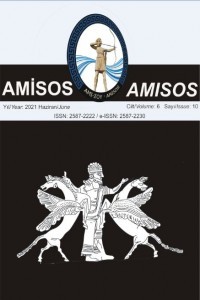JOHN RUSKIN VE YEDİ YOL GÖSTERİCİ IŞIKTAN “BELLEK”
John Ruskin, günümüzde anti-restorasyon ve konservasyon kavramlarıyla özdeşleşmiş, romantik olarak nitelendirilen bakış açısıyla da yaşadığı dönemden itibaren çok farklı kesimden övgü ve eleştiri toplamıştır. Ruskin’in eserlerini ve düşünce biçimini salt okuma ile anlamak mümkün değildir. İçine doğduğu aile ve çevre dahil, hayatındaki diğer her bir olay ve detay Ruskin’in bakış açısını, buna paralel olarak da eserlerini etkilemiştir. Eserleri sadece mimarlık ve koruma alanında değil, toplumsal konulardan mitoloji ve botaniğe kadar uzanan geniş yelpazesi ile 19. yüzyılın kültürel değişimine ışık tutmaktadır. Bu bağlamda Ruskin’in eserlerinden “Mimarlığın Yedi Yol Gösterici Işığı” ele alınmış ve altıncı ışık olan “bellek”, konservasyon çatısı alında irdelenmiştir. Ardında bıraktığı değerli düşünce filizlerinin bugüne nasıl evrildiği ise ayrıca önem taşımaktadır.
Summary
In today’s world, John Ruskin is known with the notions anti-restoration and conservation. Also, with his point of view characterized as romantic, starting from his era to today, he had received numerous compliments and criticisms, people from different walk of life. It is not possible to understand Ruskin’s work and way of thinking only by reading his publications. Every event and detail in his life including the environment that he had born in and his family, are effective on Ruskin’s point of view and parallelly his works. His works shed light on the cultural change of the 19th century, not only in the field of architecture and conservation but also from the wide range of social subjects to mythology and botany. In this context, one of the Ruskin’s most famous works, “The Seven Lamps of Architecture” was held and “memory” which is the sixth lamp, was examined within the framework of conservation. It is also important to see how his valuable thinking that he left behind has evolved to the present.
Anahtar Kelimeler:
John Ruskin, Mimari Koruma, Restorasyon, Bellek, The Seven Lamps of Architecture, Tarih, Mimarlık Tarihi, Konservasyon, Avrupa Sanatı
___
- Ballantyne, Andrew. John Ruskin. Londra: Reaktion Books Ltd, 2015.
- Birch, Dana. Ruskin and Gender. İngiltere: Palgrave Macmillan, 2002.
- Collingwood, William Gershom. The Life of John Ruskin. Londra: Methuen, 1911.
- Cooper, Suzanne Fagence. The Model Wife: The Passionate Lives of Effie, Ruskin and Millais. Londra, 2010.
- Cosgrove, Denis. “John Ruskin and the Geographical Imagination.” Geographical Review 69/ 1 (1979), 43 – 62.
- Ersen, Ahmet. “John Ruskin (1819 – 1900) ve Konservasyon Hareketi.” Restorasyon ve Konservasyon Çalışmaları Dergisi 1/6 (2010): 53 – 60.
- Ghandi, Mohandas ve Ghandi, Mahatma. The Story of My Experiments with Truth. Hindistan, 1927.
- Leight, Michele. “‘Ruskin, Turner and the Pre-Raphaelites’ Sergisi, Tate Britain.” İnceleme Yazısı, 2000. Payne, William ve McAlpine, Kenneth. “Burnishing the Lamp of Memory: Documentation and Preservation in the Digital Age.” New Review of Information Networking 12:1-2 (2006), 77 – 80
- Ruskin, John. The Seven Lamps of the Architecture. New York: John Wiley, 1849.
- Ruskin, John. Proserpina. New York: J. J. Little & Co., 1888.
- Ruskin, John. The Seven Lamps of the Architecture. Londra: Century Hutchinson, 1988
- Ruskin, John. Modern Ressamlar III, Haz. Dinah Birch. Oxford, 2004.
- Ruskin, John. The Works of John Ruskin; Vol. VIII The Seven Lamps of Architecture. Cambridge: Cambridge University Press, 2009.
- Ruskin, John. Modern Ressamlar, Çev., Nesli Türk. İstanbul: Corpus Yayınları, 2016.
- Slocombe, Matthew. “The SPAB Approach to the Conservation & Care of Old Buildings.”
- Van Bergeijk, Herman. “The Sympathy of Things. Ruskin and the Ecology of Design.” The Journal of Architecture 17:2 (2012), 293-298.
- ISSN: 2587-2222
- Yayın Aralığı: Yılda 2 Sayı
- Başlangıç: 2016
- Yayıncı: Davut YİĞİTPAŞA
Sayıdaki Diğer Makaleler
ÇİVİYAZILI METİNLERDEN ANTİK YAZARLARA: BEROSSOS
TRALLEIS KAZISI GYMNASIUM ALANINDA 2007 YILINDA BULUNAN ROMA SİKKELERİ
ESKİ MISIR'DA NİL NEHRİ VE TANRI HAPİ
AİZANOİ ANTİK KENTİ’NDEKİ GLADYATÖR BETİMLERİ
ROMA SİYASETİNDE ASKERİ GÜÇ: AELİUS SEİANUS
İPSALA’DA BİR OSMANLI HATIRASI: ALACA MUSTAFA PAŞA CAMİİ
GELENEKSEL BİTLİS EVLERİNDEN FİKRİ KIZILKAYA EVİ KORUMA PROJESİ HAKKINDA BİR ARAŞTIRMA
ARTEMİSİA GENTİLESCHİ’NİN TASVİRLERİNDE “BAT-ŞEVA” İKONOGRAFİSİ
ŞANLIURFA MÜZESİ’NDEN UZANAN SYMPOSİAST TİPİNDE İKİ ADET PİŞMİŞ TOPRAK FİGÜRİNİN İKONOGRAFİSİ
TATARLI HÖYÜK HİTİT İMPARATORLUK DÖNEMİ SERAMİKLERİNDE ÇÖMLEKÇİ İŞARETLERİ
